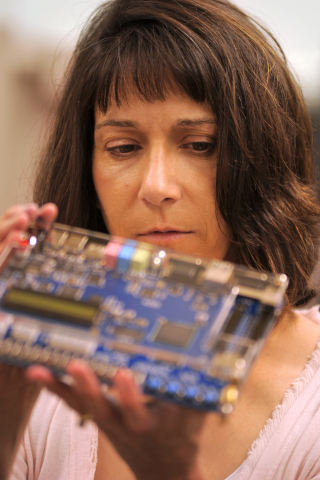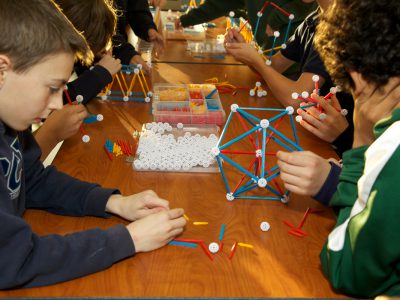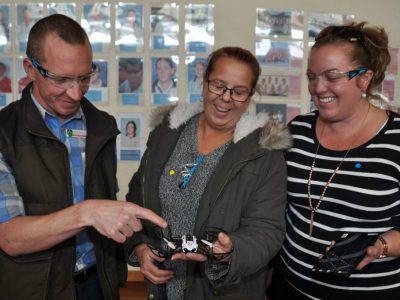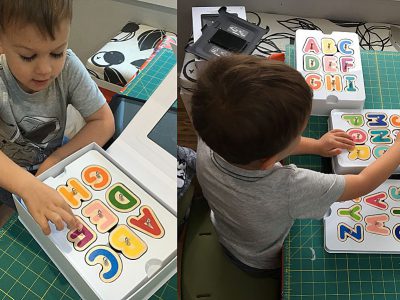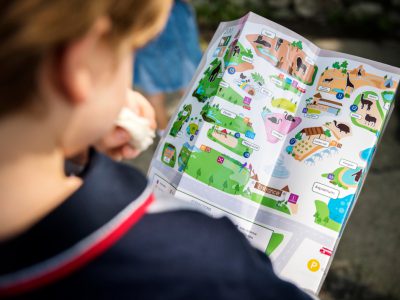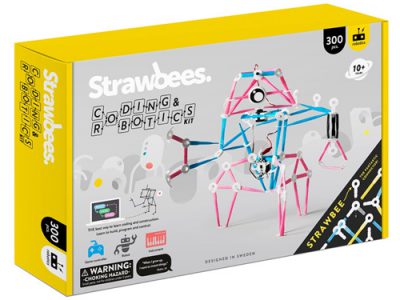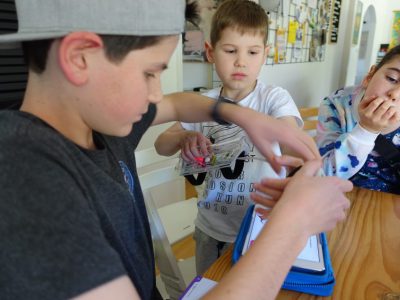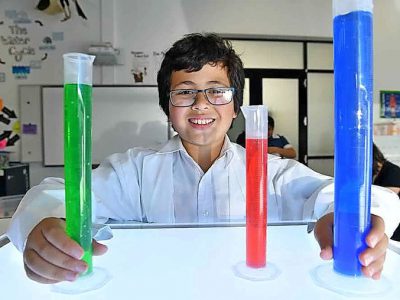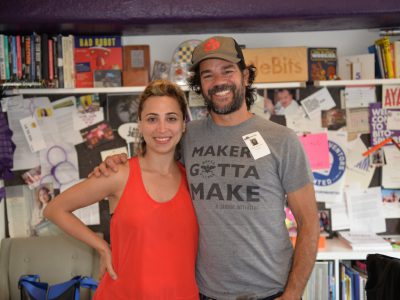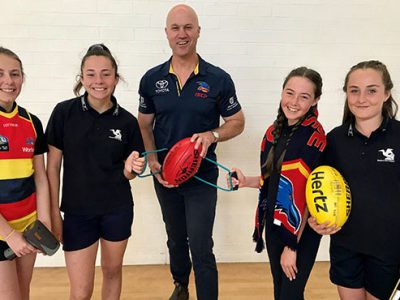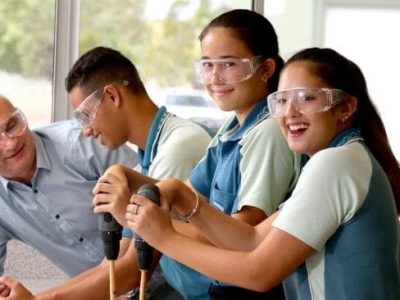SALT LAKE CITY–(BUSINESS WIRE)–The future demands a large, diverse pool of innovative scientists, engineers and mathematicians who can work together to solve big problems. The working scientists who lead SC16, the premier international conference showcasing high performance computing coming up this November, envision and advocate for a future talent pool that looks far larger and more diverse.
“My female colleagues and I still witness and experience professional slights, both overt and subtle. The oft-repeated jokes about gender. The lack of diversity in many leadership positions. It all adds up to a steady drumbeat that can drive people out of science study and work”
“Teams are always more successful at solving problems when they include thinkers with many life experiences and perspectives,” said Trish Damkroger, Acting Associate Director for Computation at Lawrence Livermore National Laboratory, who directs a 1,000-employee workforce enabling scientific discovery through large-scale computational analysis, visualization and mathematical modeling, and serves as one of the members of the SC16 leadership team. “I am saddened that there are not more women scientists and engineers. I can no longer believe it will just happen. I realized we have to work together to change the demographics.”
“In 2016, many of us encourage our children, girls and boys alike, to pursue whatever studies and careers call to them. We like to believe we are living in more egalitarian times,” said Damkroger. “However, I have found that students still experience discrimination in the classroom and beyond,” she said.
“Recent studies have shown that scientists of both genders are more likely to hire male applicants for laboratory positions than equally qualified female applicants,” Damkroger said. “The ways that our biases play out may be subtle. My female friends and I call each other when we start acting ‘too female,’ like questioning whether we are capable of a new role. Using the talents and styles of all minds is imperative if we are going to have the workforce of tomorrow.”
“Of course we all know that not every engineer or theoretical mathematician needs to look the same or conform to a rigid set of gender or personality expectations,” said Jeanine Cook, Students@SC16 Chair from Sandia National Laboratories. “More of us have to act on that knowledge—that diversity makes us stronger and more effective,” she said.
“There’s no doubt we have a long way to go,” Cook said. “My female colleagues and I still witness and experience professional slights, both overt and subtle. The oft-repeated jokes about gender. The lack of diversity in many leadership positions. It all adds up to a steady drumbeat that can drive people out of science study and work,” she said. “But I see reasons to hope that the culture of scientific work environments both outside and inside the academy are slowly evolving to become more inclusive,” Cook said. “As a woman in the field, I share the responsibility to help ensure that our future talent pool is both deeper and wider.”
The motivation is high, as the future is bright for people who are interested and qualified for lucrative and rewarding careers in science, technology, engineering and math. According to the U.S. Department of Labor, the average wage for all STEM occupations is $85,570, nearly double the average for all occupations ($47,230), and only five of the 100 STEM jobs pay below the average for all occupations.1 The outlook is bright for STEM jobs.
STEM is coming into our national consciousness as a priority, and everyone agrees that we need to encourage our youngest innovators. Education and government are putting the vision into action, and all over the country, coding clubs, robotics classes, maker spaces and other hands-on STEM experiences for all age groups are popping up. The Obama administration has spearheaded a nation-wide effort to prioritize STEM education, garnering $700 million in public-private partnerships, working to preparing 100,000 new and effective STEM teachers over the next decade, showcasing and bolstering federal investment in STEM, and broadening participation to inspire a more diverse talent pool for STEM jobs. The first ever White House Science Fair was hosted by Obama in 2010, in an effort to hold up our scientists in as high a regard as we do our athletes and entertainers.2
So what’s a parent to do? The leaders of SC16 suggest that parents can help open the door to STEM learning and eventually fulfilling, rewarding work and lucrative careers in STEM fields. The following tips are drawn from SC16 leader experience as well as a variety of community organizations working to enhance STEM learning opportunities for girls and boys of all ages. For more information, visit Project Lead the Way (www.pltw.org), Girls Who Code (https://girlswhocode.com/) or a local STEM educator near you, such as Bricks 4 Kidz (http://www.bricks4kidz.com) or C&A Robot Factory (http://carobotfactory.com).
SIX TIPS FOR PARENTS TO OPEN STEM DOORS
- Consider and reckon with your own experiences with math, science and academic achievement. Did you personally struggle with these classes as a young student? Do you have preconceived notions about what “kind of person” succeeds in science and math? Even the most egalitarian people can have deep-seated ideas about gender “norms” and it’s helpful if you are honest with yourself. Resolve to leave any antiquated notions behind and refrain from allowing your personal biases or experiences to constrain your own or any other child.
- Read to your young children about science, math and technology, no matter what interest you have on the subjects personally. Make it part of your mission to expose your children to simple science experiments, shows and museum exhibits. Visit the nonfiction stacks at the library and stock your home with lots of books about animals and the natural world, as well as biographies about famous scientists. Read newspaper and magazine articles about science topics together.
- Encourage curiosity and reward it from a very young age. Scientists and engineers seek out answers for a living, and 65{fa76ff8d89001c4e403402728e1a7786cd25c7bdb58a18ff0a8051c7751c2729} of scientists & STEM graduate students say they developed their interest in elementary school.3 Encourage your child’s questions and efforts to find the answers. Set up your home environment to be conducive to your child’s experimentation. Your kitchen, basement, garage and yard are excellent starter laboratories—treat them that way, allowing your learners to make (and clean up) their own messes. Ask the children you meet what they are reading, what problems they’re solving and what questions they’re asking. Engage all the children you meet as fellow thinkers.
- Tap into after-school enrichment activities and experiences to kindle a child’s interest. Sign them up for coding clubs and robotics classes. Take them to a workshop at a maker space or hands-on STEM experience at your local library. Subscribe to mail-order STEM activity kits (Tinkercrate.com) to get your child playing and thinking. Keep exposing them to new experiences, but don’t stop there—watch for where their excitement is sparked and keep feeding the flames with related books, museum visits, and new learning experiences that build on each other.
- Identify and seek out mentors and teachers who work in the fields and find ways for your older student to learn from them. Many people who have become successful in STEM fields cite the inspiration of a family member or good teacher who propelled them to keep asking questions and solving problems and coached and supported them along the way. Recruit parents from your child’s school who work in the sciences, engineering and technology to participate in a STEM career day. Arrange for you and your child to spend time with your friend who works as a chemist. Keep seeking out supportive relationships, especially for older students who have demonstrated interest and aptitude. All young scientists benefit from mentor relationships, but young women pursuing undergraduate, graduate and doctoral science and math studies are especially wise to seek out female classmates and mentors to help them navigate and thrive.
- Most importantly, know that many students give up on math and science before they’ve had a chance to understand, appreciate and fall in love with their true beauty and interconnectedness. Keep encouraging your child to grapple with hard problems and do the work necessary to understand science and math, at all ages. Invest time and money in good academic coaching if your child is struggling to stay with these subjects. Encourage them to persist—the rewards will be great.

